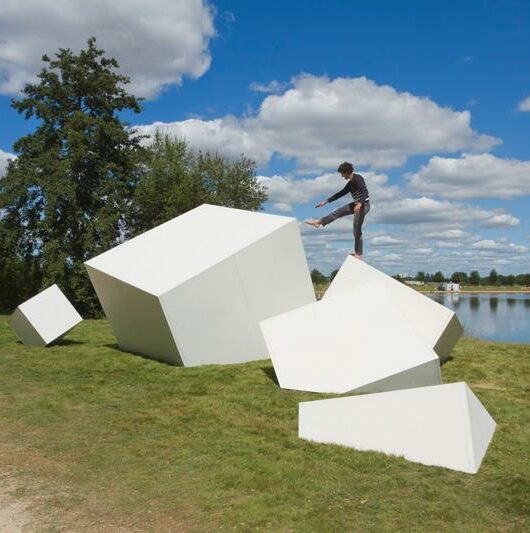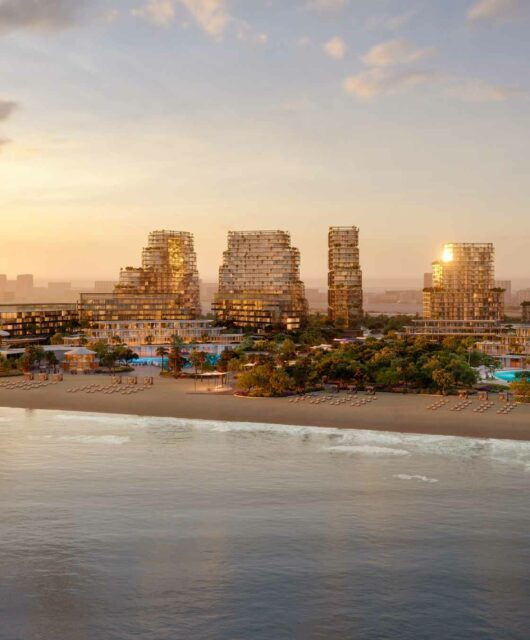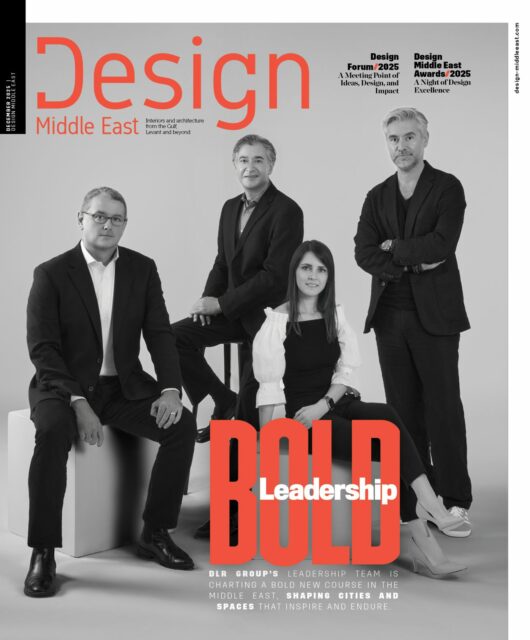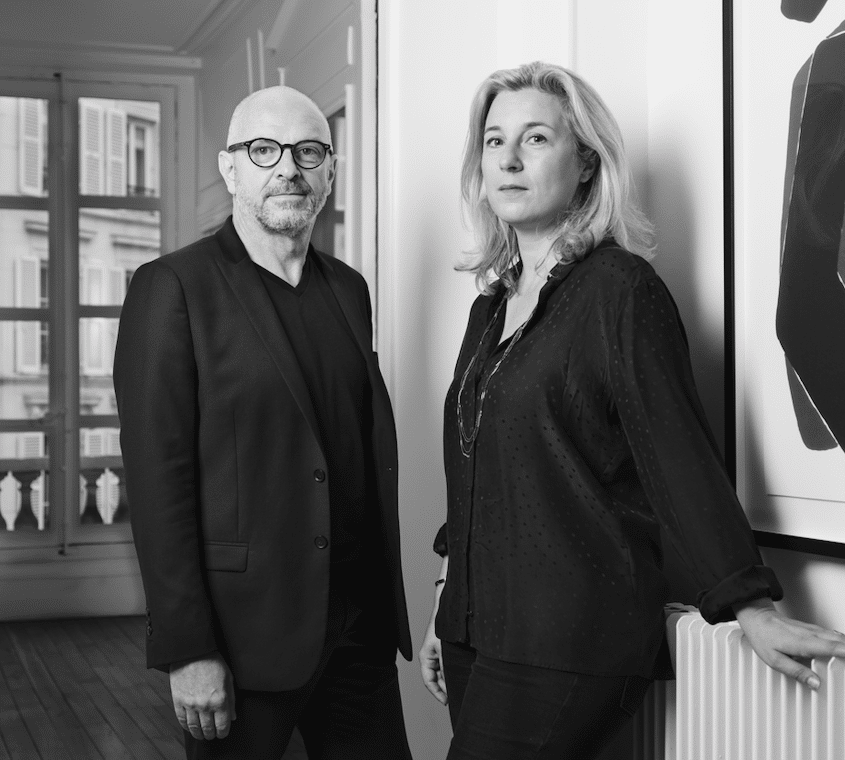 Stéphanie Ledoux and Reda Amalou, partner architects at Paris-based firm AW2 Architecture Workshop, discuss their first built project in Saudi Arabia— Ashar Tented Resort and why the ‘back to basics’ trend in architecture is important
Stéphanie Ledoux and Reda Amalou, partner architects at Paris-based firm AW2 Architecture Workshop, discuss their first built project in Saudi Arabia— Ashar Tented Resort and why the ‘back to basics’ trend in architecture is important
BY ROMA ARORA
Could you tell us more about Ashar?
Ashar Tented Resort will provide an extraordinary place to stay in the heart of the AlUla region, which is a unique location incorporating the history, culture and heritage of the Kingdom of Saudi Arabia in a beautiful natural, desert landscape. At Ashar we are creating the first international standard resort for AlUla, offering stunning accommodation in suites inspired by the traditional Bedouin tents. This design is an expression of the region’s past for all to discover and enjoy and provides an opportunity for the country to showcase its incredible culture and natural and historic assets. The goal is to create a communication bridge with the rest of the world, attract visitors, and allow the world to behold the beauty of this exceptional place.
Is this your first project in the region?
We already worked in the Kingdom of Saudi Arabia but we are excited that this will be our first built project in the country. We have also designed projects in the wider region including in the United Arab Emirates, Jordan and Oman. We recently completed the interior design for the Shirvan Métisse restaurant for Michelin-starred chef Akrame on the prestigious Pearl Marina in Doha, Qatar.
How was it working in Saudi Arabia and how did it differ from your previous ventures around the world?
Each project is about creating new experiences, we never compare ventures as each one is unique, entirely dependent on the qualities and history of the site and its context. Here in Ashar, we are in one of the world’s most beautiful deserts with a rich heritage and ancestral archaeological treasures. Our architecture celebrates and complements this very special place.
Where do you find design inspiration outside of architecture?
We find inspiration through our travels and getting to know each site around the world in all its complexities. This means understanding the essence of a place by discovering the local knowhow and traditions as well as by simply talking to locals. We also work closely with the client to understand the ambitions for the future project to make sure we are aligned.
What was your impression of attending and leading a round table discussion at Expo 2020’s French Pavilion?
We found that Expo 2020 presents an impressive array of architecture, design and thought-leadership. We particularly enjoyed taking part in ‘The French Approach to the Sustainable and Desirable City’ symposium through ‘The Challenges of Tourism’ roundtable, where we set out our vision for the future of the hospitality industry. Today, all developers are placing the question of balance at the top of their agendas and we feel that a sustainable approach to design, such as ours, will increasingly be adopted to achieve projects in harmony with the world around them. Stéphanie was also invited to participate in the ‘Women Designing for AlUla’ talk hosted within the AlUla exhibition at Dubai Design Week, led by Samantha Cotterell, Executive Director of Design at the Royal Commission for AlUla. This was a great opportunity for (female) designers to discuss the communal goal of showcasing the beauty of AlUla to the world.
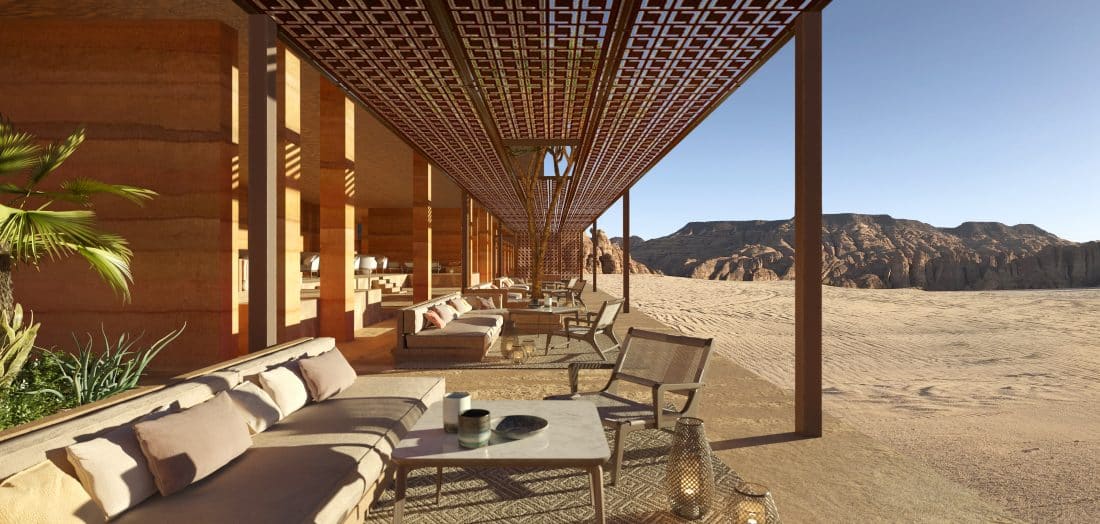
What trends do you see coming through in the architecture / interior design space?
We have noticed a tendency, or a desire even, to return to what is essential, a sort of “back to basics”! For example: in terms of using local materials and reinterpreting traditional patterns and forms. Today, people expect a real experience, a real sense of place, and architecture is the first step to achieving this authenticity. We also feel that people are seeking more meaningful experiences through travel. A fulfilment of the mind as well as the senses.
What are some of the biggest changes you’ve seen in the past 10 years?
There has been a really exciting change over the past ten years around travel and hospitality, whether high-end or more affordable, becoming environmentally and socially responsible. People want new hotels and resorts to have a positive relationship with local communities and environments, while also offering guests meaningful experiences and interactions with those communities and landscapes. There is growing recognition that new developments shouldn’t be “parachuted” onto a site, they should be in a form of dialogue with it, and belong to it in a sustainable way.
There’s obviously a lot of focus on sustainability now. How has that evolved?
Sustainability is now the main prism through which travellers understand and enjoy a place. In the hospitality sector, it is not only a question of how to build but also how to offer guests the possibility of observing a sustainable approach to tourism. Our bioclimatic approach to design, which we have been developing over the last 25 years, is now a given on every one of our projects. It plays an integral part in our concepts from the scale of the master plan down to the smallest details in the interiors. Examples of this include the use of local materials, sun protection, natural ventilation and limiting the use of energy. These are all essential to our design approach and are no longer considered as compromises but rather guiding principles.
Which building do you wish you had designed in the Middle East?
It is a difficult choice. We were very much impressed by the traditional Bedouin tents, which are amazingly simple but so efficient at providing shelter in the desert climate. But, if we have to choose an actual building, we would probably choose Tuwaiq Palace in Riyadh. It is an incredibly smart and beautiful building. One which tells a story unravels spaces that are open to nature and it was, although built around 40 years ago, truly sensitive to its context and environment. Its bioclimatic approach is both poetic and intelligent in a way that serves, still today, as an example.

Our dream client trusts that the design will lead the asset to success. This client understands that the design will create the experience and therefore design should be the main focus. Our dream project is one that immediately feels obvious when it has been built. This means that it creates a feeling as if it has always been there (or should always have been there). This type of dream project creates an emotional relationship with the end-user, and this is what we work towards in every one of our projects

